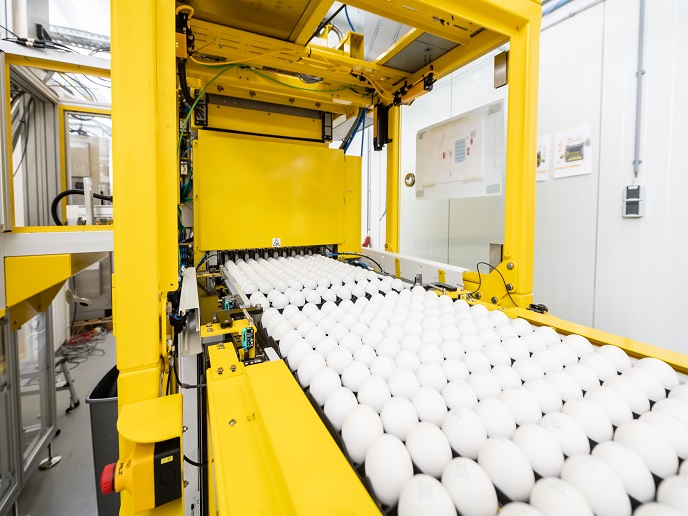Automated gender selection technology could transform the egg industry
In the egg industry, the gender of newborn chicks is determined at the hatchery manually, after hatching. Unable to lay eggs, male chicks are considered an unwanted by-product of egg production and are killed shortly after chick sexing at just one day old.
New technology to prevent male chick culling
In the Netherlands alone, around 45 million male chicks are killed annually. Supported by the EU-funded InOvotive project, the Netherlands-based company In Ovo has developed a technique to determine the gender of eggs accurately and quickly, enabling hatcheries to automatically sort eggs during incubation. In Ovo’s method of determining a chick’s gender while still in the egg could render chick culling obsolete. This scientific advance promises to revolutionise egg production, eliminating ethical dilemmas and improving animal welfare.
Identifying a chick’s gender in the blink of an eye
With an upgraded prototype at hand, In Ovo can determine the gender of an egg within seconds on day nine after the start of incubation. After creating a tiny hole in the shell, a small drop of fluid is taken without having an adverse effect on the embryo. The hole is then closed immediately. Using mass spectroscopy, a fully automated process screens each sample for the presence of a gender-linked chemical biomarker, which helps determine whether the embryo is male or female with high accuracy. “The analysis takes place on day 9 of the 21-day incubation process because we deem that the embryos do not yet have a conscious pain or discomfort experience,” says Wil Stutterheim, cofounder of In Ovo. “Pain perception is a subject that is highly debated. There is still no consensus about when exactly the nervous system transmits signals between the brain and the rest of the body, but we believe screening should not be performed after day 11. Some competitor companies screen the embryos at days 13 or 14 of incubation.” In Ovo’s method works on all commercial breeds of chicken, white and brown. The Echo® MS technology provided by SCIEX determines the biomarker concentration within a second. “Besides being the fastest mass spectrometer on the market, our screening technology is not limited to detecting just one biomarker. Unlike competing technologies that use only a DNA marker or a specific hormone that works with colour reaction, we can easily switch to another biomarker,” explains Stutterheim. “As a result, we can use biomarkers that yield results earlier or can be used in the same prototype device for applications other than in-ovo sexing.”
On the path to greater commercialisation
“Our machine currently operates in line in a commercial hatchery in the Netherlands,” says Bram Uljee, marketing manager at In Ovo. “We plan to place the next machine in a different country early next year.” The killing of male chicks may not be the most visible among animal welfare issues, but it is gaining increasing attention among consumers as well as policymakers. Uljee notes the importance of providing a fast and accurate alternative, that’s easy to implement in a large commercial hatchery, as key to effectively putting a stop to chick culling. “We see our solution as a great step for the poultry industry to become future-proof,” he says, “And we believe everyone in the industry would like to get rid of this practice.”



